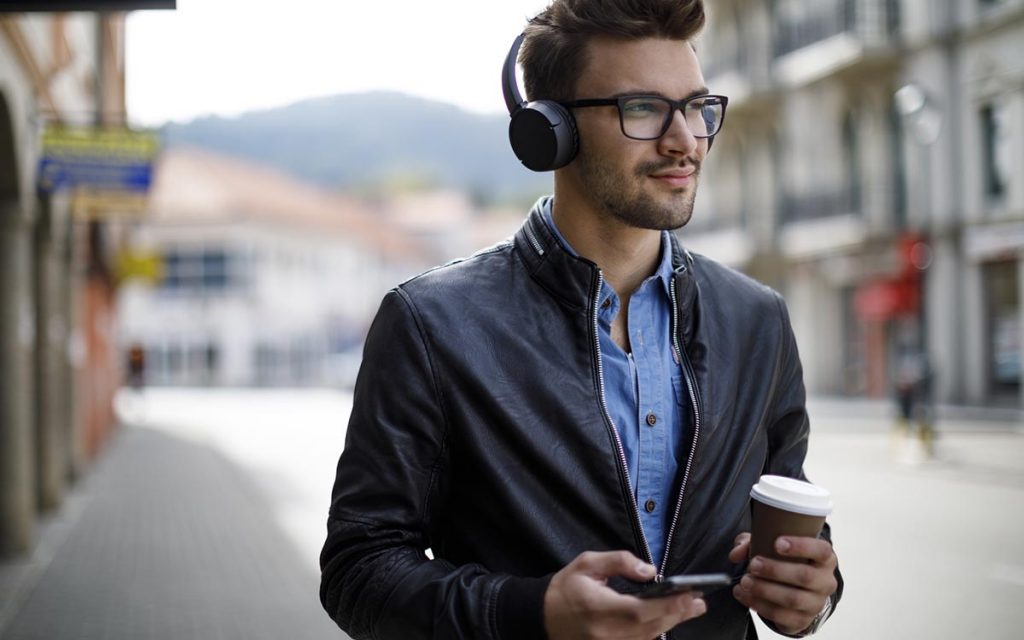Is there a device that better exemplifies the modern human condition more than headphones? Today’s wireless headphones allow you to connect to a worldwide community of sounds while simultaneously giving you the ability to isolate yourself from everyone you see. They let you listen to music or watch Netflix or keep up with the news from anywhere. They’re fabulous. But, headphones might also be a health risk.
At least, as far as your ears are concerned. And the World Health Organization just might agree. That’s especially troubling because headphones are everywhere.
The danger of headphones
Frances loves Lizzo. And so she listens to Lizzo. A lot. On the way to work? Lizzo. On her lunch break? Lizzo. While walking around Target for groceries? Well, you get the idea. Because Frances loves Lizzo so much, she also cranks up the volume (there’s a certain enjoyment in listening to your favorite song at max power). She’s a considerate person, though, so Frances uses high-quality headphones to enjoy her tunes.
We use headphones because we want the listening experience to be somewhat private (so we can listen to whatever we want) and also so we don’t bother the people around us (usually). But that’s where the danger lies: we’re exposing our ears to a significant amount of noise in a prolonged and intense way. Over time, that noise can cause damage, which leads to hearing loss. And hearing loss has been linked to a wide variety of other health-related ailments.
Protect your hearing
Healthcare professionals consider hearing health to be a vital component of your overall wellness. And that’s why headphones pose something of a health risk, especially since they tend to be omnipresent (headphones are quite easy to get your hands on).
The question is, then, what can be done about it? Researchers have offered several concrete steps we can all take to help make headphones a little safer:
- Turn down the volume: The World Health Organization recommends that your headphones not exceed a volume of 85dB (for context, the volume of a typical conversation is something like 60dB). Unfortunately, most mobile devices don’t measure their output in decibels. Try to make sure that your volume is less than half or look up the output of your specific headphones.
- Take breaks: It’s hard not to pump up the volume when you’re listening to Lizzo. That’s understandable. But your ears need a bit of time to recover. So consider giving yourself a five-minute break from your headphones here and there. The idea is to give your ears some time with lower volumes every day. By the same token, monitoring (and restricting) your headphone-wearing time can help keep moderate volumes from damaging your ears.
- Restrict age: These days, younger and younger kids are wearing headphones. And it might be wiser if we cut back on that a bit, limiting the amount of time especially younger children spend wearing headphones. The longer we can prevent the damage, the more time you’ll have before hearing loss sets in.
- Listen to volume warnings: It’s likely that you listen to your music on your mobile device, and most mobile devices have built-in warnings when you start pumping up the volume a little too much. It’s incredibly important for your ear health to adhere to these cautions as much as possible.
If you’re at all concerned about your ear health, you may want to curtail the amount of time you spend on your headphones altogether. And, of course, always follow your hearing specialist’s advice.
It’s just my hearing, right?
When you’re young, it’s easy to dismiss damage to your hearing as trivial. But your hearing can have a huge impact on several other health factors, including your overall mental health. Untreated hearing loss has been linked to increases in the risk for issues like dementia and depression.
So your hearing health is linked inextricably to your overall wellness. And that means your headphones could be a health risk, whether you’re listening to Lizzo or a baking podcast. So do yourself a favor–turn the volume down, just a bit.
